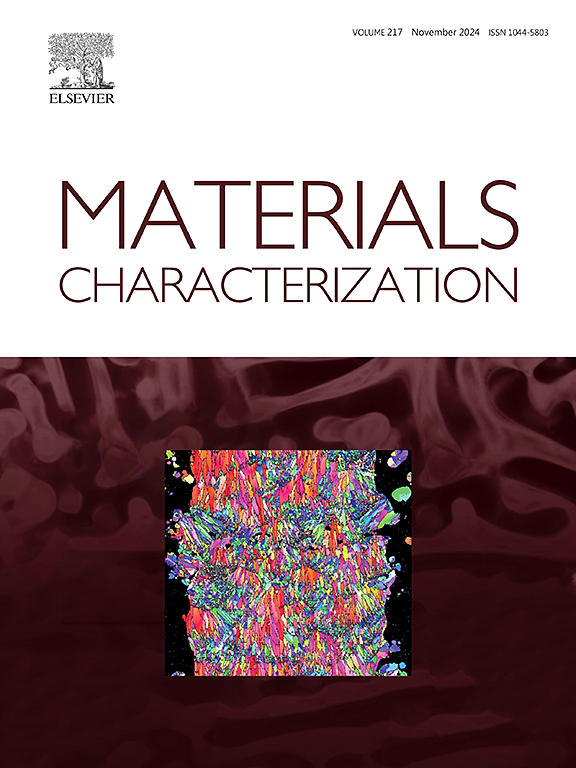Simultaneously improving strength and ductility of cast Mg-Gd-Zn alloy through Er addition
IF 4.8
2区 材料科学
Q1 MATERIALS SCIENCE, CHARACTERIZATION & TESTING
引用次数: 0
Abstract
Precipitation strengthening typically enhances strength at the expense of ductility, giving rise to the strength-ductility trade-off in magnesium-rare earth (Mg-RE) alloys. Erbium (Er), which exhibits relatively high solid solubility in Mg, offers great potential for strengthening and toughening Mg alloys. This study systematically investigates the influence of Er addition on the microstructure, mechanical properties, strengthening and toughening mechanisms of Mg-10Gd-xEr-0.2Zn-0.4Zr (x = 0, 1, 2, 4) (wt.%) alloys. The addition of Er causes a transformation of the eutectic phase from Mg5Gd to Mg3(Gd, Er) in the as-cast alloys, accompanied by an increase in the content of unexpected rare earth hydrides. Following appropriate heat treatment, a substantial amount of Er dissolves into the Mg matrix, resulting in pronounced solid solution strengthening. Additionally, a portion of Er participates in the precipitation process, significantly increasing the number densities and sizes of the β’ and β1 phases. Slip trace analysis indicates that Er addition remarkably promotes the activation of non-basal slip, thereby enhancing homogeneous plastic deformation capability and contributing to improved ductility. First-principles calculations further confirm a substantial reduction in generalized stacking fault energy (GSFE) upon Er addition. The novel-developed Er-containing alloys demonstrate an excellent strength-ductility synergy, with the peak-aged alloy containing 2 wt.% Er showing superior room temperature mechanical properties: 257 MPa yield strength, 382 MPa ultimate tensile strength, and 8.2% elongation. This research provides important scientific insights into evading the strength-ductility trade-off in Mg alloys, which is critical for their broader application.

求助全文
约1分钟内获得全文
求助全文
来源期刊

Materials Characterization
工程技术-材料科学:表征与测试
CiteScore
7.60
自引率
8.50%
发文量
746
审稿时长
36 days
期刊介绍:
Materials Characterization features original articles and state-of-the-art reviews on theoretical and practical aspects of the structure and behaviour of materials.
The Journal focuses on all characterization techniques, including all forms of microscopy (light, electron, acoustic, etc.,) and analysis (especially microanalysis and surface analytical techniques). Developments in both this wide range of techniques and their application to the quantification of the microstructure of materials are essential facets of the Journal.
The Journal provides the Materials Scientist/Engineer with up-to-date information on many types of materials with an underlying theme of explaining the behavior of materials using novel approaches. Materials covered by the journal include:
Metals & Alloys
Ceramics
Nanomaterials
Biomedical materials
Optical materials
Composites
Natural Materials.
 求助内容:
求助内容: 应助结果提醒方式:
应助结果提醒方式:


